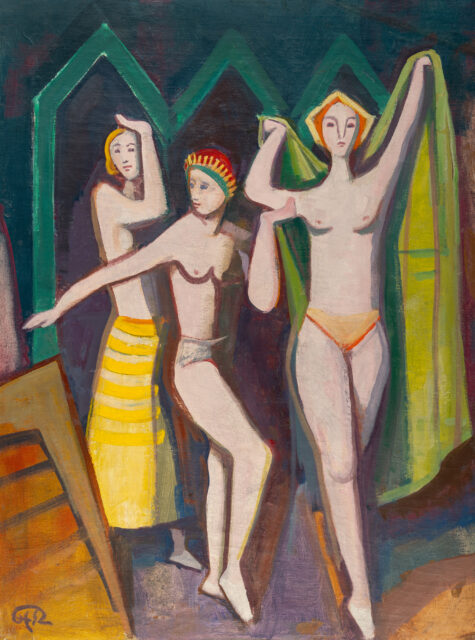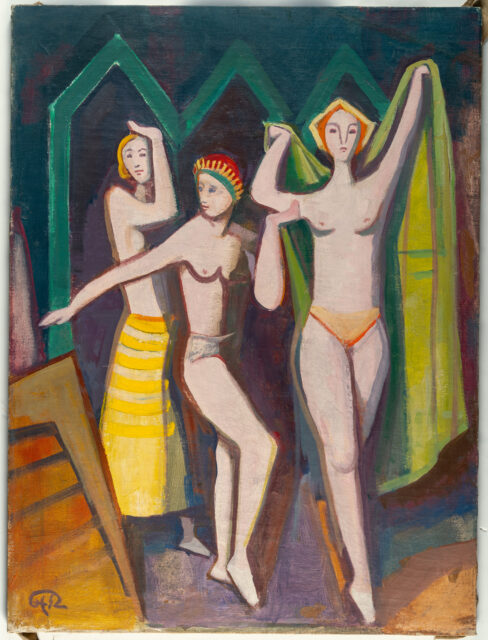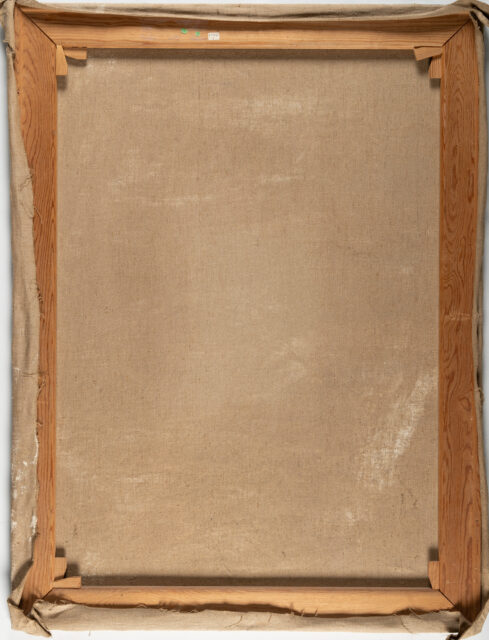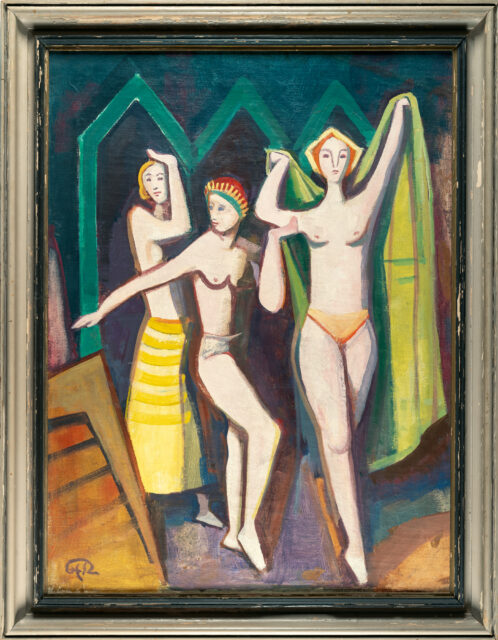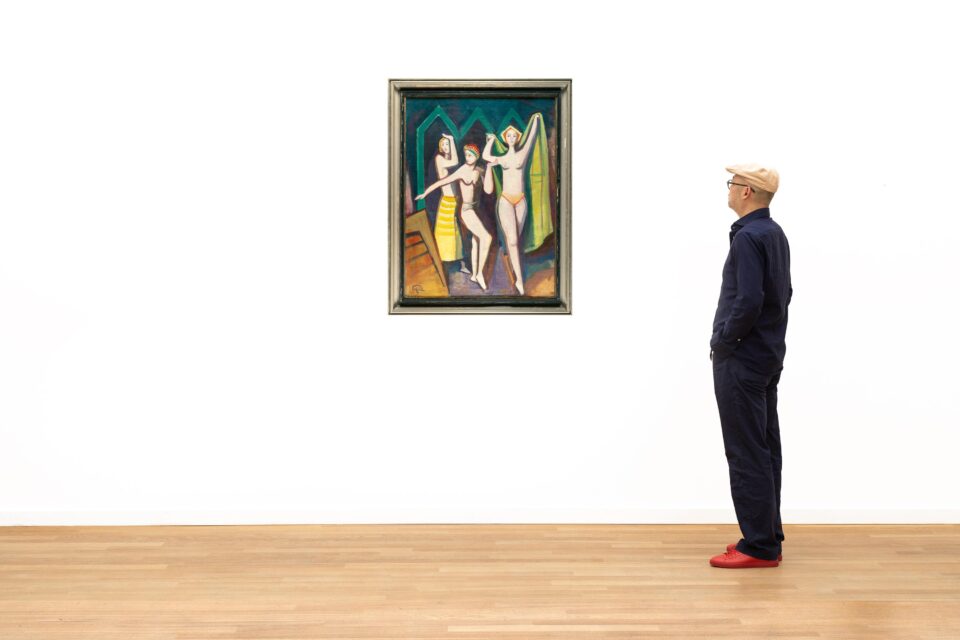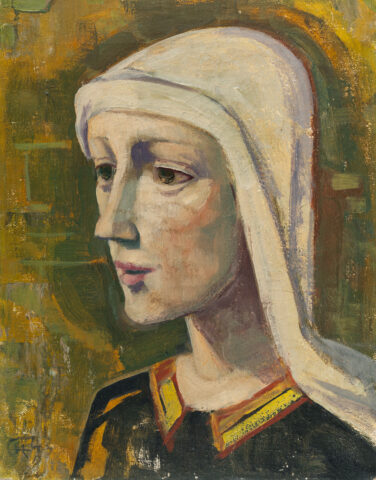
Three Graces
Details
Literature:
Weltkunst, Vol. 62, 1992, No. 8, 15 April 1993, p. 985, with illustration (ad for Ahlden Castle).
Exhibition:
Retrospective exhibition Karl Hofer. Ölbilder, Aquarelle, Handzeichnungen, Druckgraphik, Baukunst Galerie, Cologne 1975, no. 101, no illus.
Provenance:
Estate of the artist;
Ahlden Castle, Ahlden 20 May 1993, lot 1217;
Privately owned, Lingen/Lower Saxony;
Private property, Southern Germany, by succession to the present owners.
Descrizione
– Hofer’s portraits of girls are among the most popular motifs in his extensive oeuvre
– The “Three Graces” from 1952 show an unusually dynamic and lively variation
– The painting was shown at Karl Hofer’s major retrospective exhibition in Cologne in 1975
In Karl Hofer’s extensive oeuvre, depictions of three women are among his most popular motifs. Compositionally, this subject is based on the mythological theme of the three Graces, who symbolise grace, beauty and joy. They have always served as a model for the visual arts and the most famous depictions are by the famous Renaissance painters Botticelli, Cranach, Raphael and the classicist sculptor Canova. Typically, the three ladies are depicted naked and embracing or touching each other. Karl Hofer took up this classic female trio in his early artistic work, but emancipated himself from the mythological background. He was primarily interested in the compositional possibilities of the motif. In 1952, he depicted the “Three Graces” as semi-nudes and without direct contact with each other. Almost frontally to the viewer, they stand next to each other, slightly staggered backwards. Their light-coloured bodies as well as the colourful scarves and headdresses almost glow against the dark background, which only vaguely suggests a stage-like backdrop. All three ladies have their arms raised or spread wide, and two of them place their feet in front of each other in elegant dance steps. These “Three Graces” are almost identical in the painting “Variety Dancers”, which was created just one year later. In contrast to his often static and melancholy groups of figures, Hofer enlivens this charming scene of the “Three Graces” with a great deal of movement and joie de vivre.
* Tutte le informazioni includono la commissione a carico dell'acquirente (27%) senza IVA e senza garanzia. Salvo errori.
** Tutte le informazioni più la commissione a carico dell'acquirente e l'IVA e senza garanzia. Salvo errori.
*** Con riserva: L'offerta è stata accettata al di sotto del limite. L'acquisizione dell'opera potrebbe essere ancora possibile nella nostra vendita post-asta.
R = Le opere d'arte regolarmente tassate
N = Opere d'arte soggette a tassazione differenziata e provenienti da un paese non UE
Non è consentita la riproduzione e la distribuzione privata o commerciale di tutte le illustrazioni delle opere esposte nell'archivio della mostra e dell'asta. Tutti i diritti riservati.


